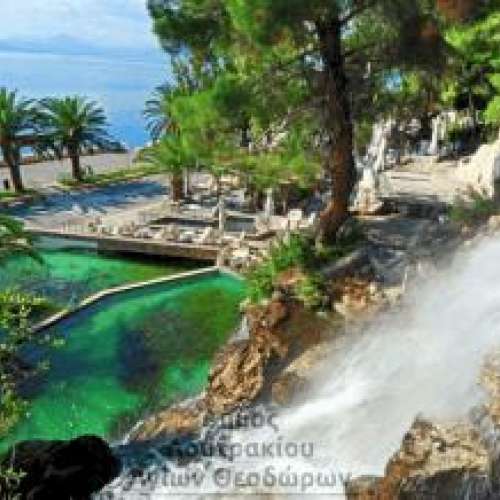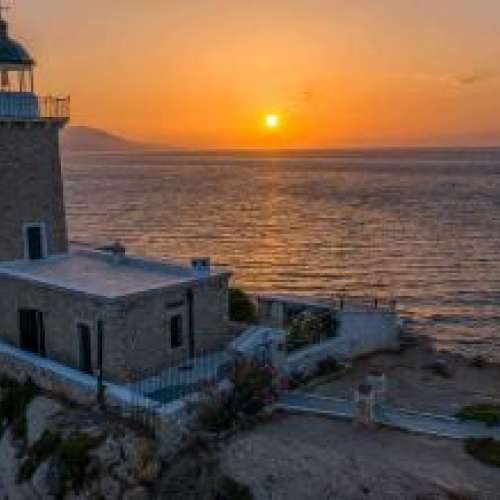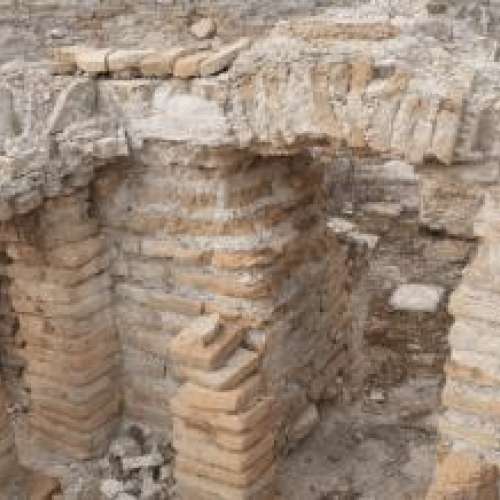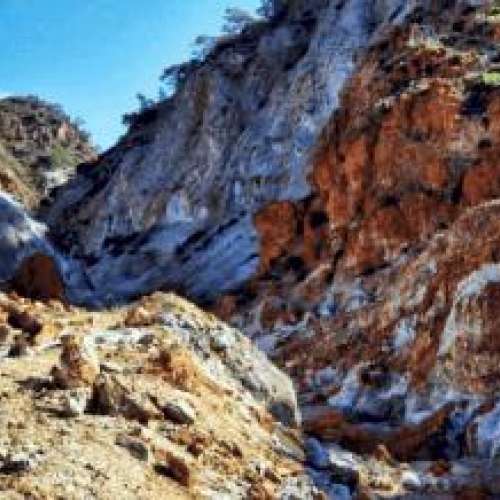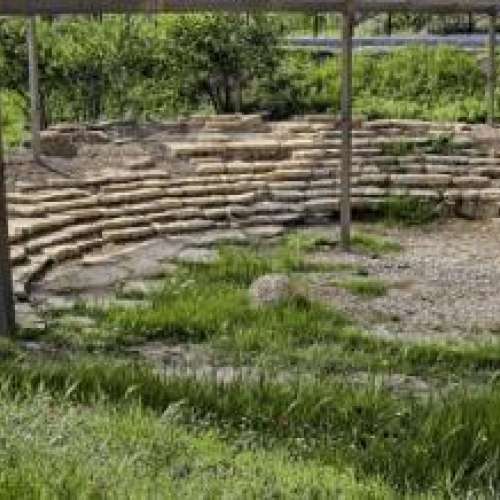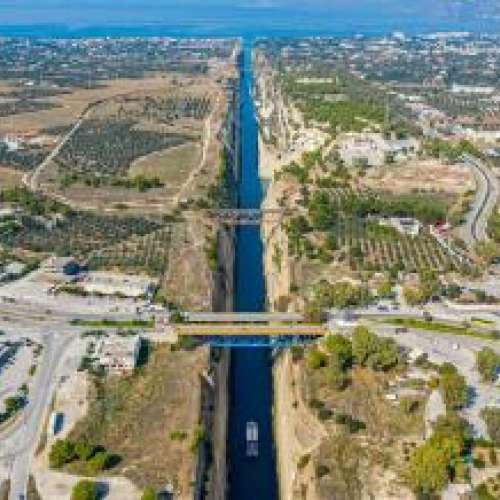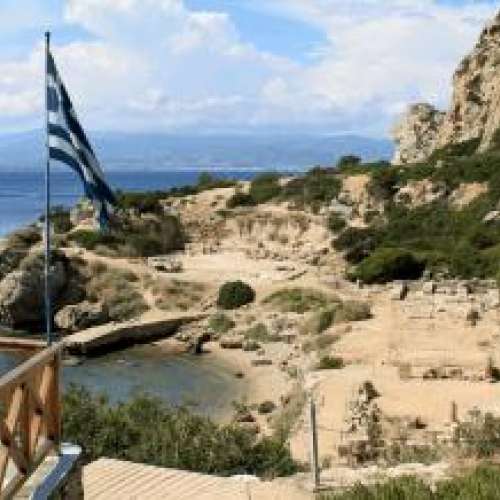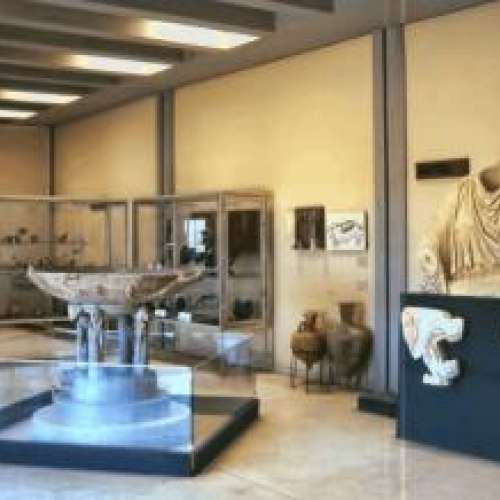The strategic position of the city in the entrance of the Peloponnese combined with the vast history of the region that spans from almost 3.000 years B.C. until today, scatters sites and landmarks throughout the Municipality of Loutraki, Perachora and Agioi Theodoroi.
Loutraki Waterfalls
The Loutraki Waterfalls, an artificial construction located next to the colonnade building of the Old Thermal Springs, are indisputably one of the most impressive landmarks of the city. This small heaven consists of tall trees, rocky corners and lots of water falling in amazing formations.The perfect place to relax and enjoy your coffee or drink while listening to the sound of the water and watching the deep blue sea in front of you.
Melagavi Lighthouse
The Melagavi lighthouse, also known as Heraion lighthouse, was built in 1897 on the Agrilaos peninsula, in the golf of Alkyonides Islands. In 1947, the building was renovated and repaired. Its outline is T shaped, and it has a rectangular light tower.It is made of stone and it constitutes a typical example of classical lighthouse architecture.Melagavi is renowned to be one of the 10 most beautiful lighthouses in Greece and it is also one of the most photographed landmarks by travelers with thousands of captures on Social Media like Instagram and Tumblr.
Roman Estate in Loutraki
The Roman Estate is located in the area of Katounristra, a few kilometers of the city of Loutraki. The estate is still under the excavation process and the findings point to the fact that it belongedto a very prominent Roman.
Sousaki Volcano
The Sousaki is a dormant volcano located at the southern ends of Geraneia mountains in the Agioi Theodoroi district. Sousaki volcano is the Northwestern part of the active volcanic arc of the Aegean. In spite of its continuous sleep through the ages, the volcano still emits sultry fumes. You can reach the area by crossing a short, rough path among olive trees. The scenery looks almost lunar, the air smells sulphur, whereas the sloping volcano is full of impressive stones. In the ancient years, according to Xenofontas, in the same plain area, there used to be the coastal settlement of Sidous, which was widely known for its apple trees.
The Ancient Krommyon
In 1961, during the excavation of the Old National Road of Athens - Corinth, Ancient Krommyon was brought to light, revealing a site dated back to the Geometrical Period (1000-700 B.C.). Among others, several tombs and artistic ancient pots dated from the Hellenistic Era(338 B.C.) as well as from the Peloponnesian War Period were discovered.
The Corinth Canal
The Corinth Canal, though only completed in the late 19th century, was an idea and dream that’s dates back over 2000 thousand years. Several rulers in antiquity dreamed of digging a cutting through the Isthmus. The first to propose such an undertaking was the tyrant Periander in the 7th century BC.
However the technical capabilities in ancient times made his idea impossible to implement. Instead, he developed the “Diolkos”, which served the purpose of carrying ships in a wheeled vehicle and transferred them from one side to the other. The remnants of the Ancient Diolkos still remain intact in the area.
The concept of the canal opening was revived again during the late 1800’s. Aer several years and many tryouts, the Corinth Canal was finally completed and started operations on the 25th of April, 1893. The remnants of the Ancient Diolkos still remain intact in the area.
The Heraion Of Perachora
The Heraion of Perachora was a sanctuary dedicated to the goddess Hera, situated in a small cove of the Corinthian gulf at the end of the Perachora peninsula. In addition to a temple of Hera which is of unusual construction, the remains of a number of other structures have also been found, including a L-shaped stoa, a large cistern, dining rooms, and a second potential temple remnants. The Heraion Archaeological Site is visited by thousands of culture and history lovers throughout the world every year since the unusual plan of the 6th century BCE.
The Isthmian Museum
The Isthmian Archaeological Museum was built in 1970 by the Greek architect Pavlos Mylonas and opened for visitors a few years later, in 1978. It consists of two chambers, where priceless archaeological remains and cultural relics of the ancient greek civilization are demonstrated; special findings from the excavations of Isthmia and Kehrees- the second most important port in Ancient Corinth.

